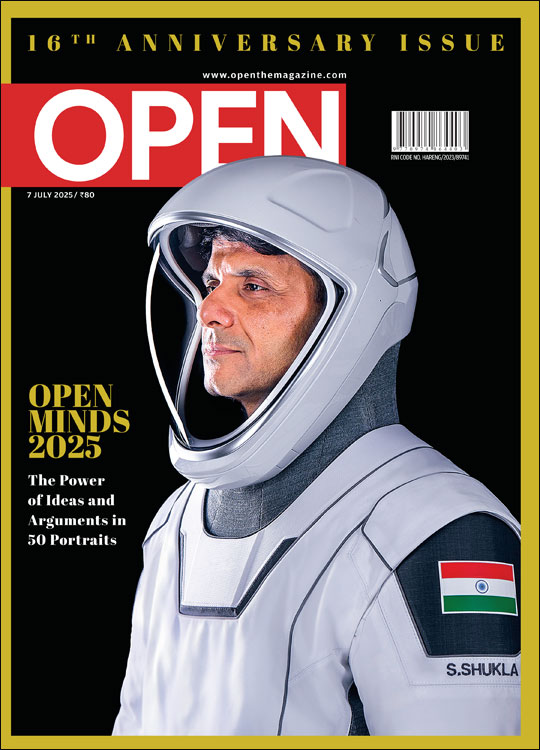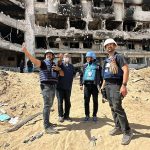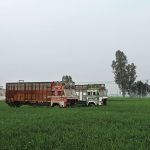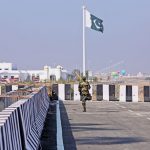The Horror and Sorrow of Gorakhpur
Pallavi Pundir visits ground zero of the tragedy at Baba Raghav Das Medical College hospital (Photos: Raul Irani)
 Pallavi Pundir
Pallavi Pundir
 Pallavi Pundir
|
17 Aug, 2017
Pallavi Pundir
|
17 Aug, 2017
/wp-content/uploads/2017/08/Gorakhpur1_0.jpg)
How do you tell a mother that her child is dead? “Rona mat (Don’t cry),” is the first command. Bundle her up and take her from the back door, is next. Do not talk to anyone about it, comes soon after. The heavy, humid air inside the hospital corridor of the paediatric ward closes in. She swallows the anger with the lump in her throat. She looks on as the father and uncles slowly wrap whatever is left of her child in a sheet and take her out of the ICU.
The child was a 12-year-old girl who excelled in sports in school. The child was a 10-day-old baby who wasn’t even named. The child was even a newborn, stacked on a stretcher along with three other babies. The mother collapses on the floor. She is helped up by her kin and she limps towards the exit door. There is no ambulance available. The auto charges Rs 1,500 to take them to their village, located some 20-odd km away. In the meantime, more wrapped bundles emerge from the ICU.
Today, the mother is back at home. In Gorakhpur, where Baba Raghav Das Medical College (BRD) hospital has claimed the lives of over 70 children (and counting), shock has given way to anger, despair, and finally, numb acknowledgment. It’s August 15th, but it’s business as usual at the biggest government hospital in the district. It is the only one in the Poorvanchal region and is meant to serve 100 million people in eastern UP, western Bihar and the Tarai region of Nepal. Every few seconds, an ambulance pulls up and parents with children step out, rushing to the ICU. Doctors and nurses hustle about, tight-lipped, whisking visitors from one end to another. In the main portico, meant as a waiting area, kin of patients lie on the floor, waiting to hear about their children.
“Is your child doing okay?” I ask.
“Yes, the doctors are doing their job. My four-year-old grandson looks fine,” says an old man.
“Did you hear about the deaths, though?”
“It’s all up to fate. I am okay, just as long as my child is okay,” he says.
The mother who has lost her child is not at the hospital today. She went back home the day her child was announced dead, never to come back. She may or may not have picked up the death certificate. It doesn’t matter.
On August 15th, away from the dark hallways of BRD hospital, the city’s outskirts have been claimed by flood water, submerging roads as well as parts of villages. Slushy puddles of dirty water are to be seen beside concrete roads and narrow lanes. Mosquitoes and insects hover over pools of stagnant water. We trudge over a dirt track, and find ourselves in one of these homes.
“My children wanted milk once. But we are not sure if it reached them. There is no bigger crime than to not allow a mother to feed her child” – Bramdev Yadav, father of 10-day-old twins who died on August 4
In Gulahria village, where the roads do not permit four-wheelers after a point, we meet Bahadur Nishad. Dressed in a yellow T- shirt and blue denims, the 30-year-old steps out and quietly sits on a khaat with us. There are prominent dark circles under his eyes. He looks unwell. “Of course I will be unwell. I haven’t eaten since August 10th,” he says. His voice is flat. His mother squats next to us, mumbling unintelligible words. His wife hasn’t spoken or eaten much since their eldest son died.
They realised their four-year-old Deepak was unwell around 2 pm on August 9th. He had ‘jhatka bimari’ or encephalitis, a potentially life-threatening but rare disease which causes inflammation of the brain. The disease is known to appear abruptly and advance rapidly. It is caused by bacterial infections, parasites— the mosquito-borne kind being prime suspects around here—or may be prompted by other infectious diseases. Bahadur’s wife, Nandini, decided to take him to the hospital and walked with him for around two kilometres before the child started throwing up and fainted. “Some people who knew us saw and quickly took him to a private hospital in the vicinity,” says Bahadur. The clinic was shut. That’s when they took him to BRD hospital. “Yogi Adityanath was visiting between 2 pm and 6 pm,” he says, “The treatment started only after that. They did not even admit my son before that.” Deepak made it to the ICU after 6 pm, where Bahadur was handed an amu-bag and asked to pump oxygen into his son’s system. “His body started to bloat,” says Bahadur, “The nurse lifted his shirt to check what’s wrong. He had stopped breathing. She screamed and all the doctors ran away. Then this one doctor came and started pressing his chest. That’s when he started breathing again. They inserted a pipe and attached him to a machine. Tab tak uska aadha praan nikal gaya thha (By then, he’d lost half his life).” The nurses asked Bahadur to get medicines and syringes from outside, which were never used. Deepak died on August 10th at 8 am.
At home, a Hero motorcycle stands inside the corridor. Bahadur, a painter by profession who spends a few months every year on painting jobs in Hyderabad, Bengaluru and Chennai and earns between Rs 5,000 and Rs 17,000 per month, looks on at his vehicle with dejection. “He used to love bike rides with me. I had thought I’d make my son learn how to make motorcycles or autos. I would have helped him open a mechanic shop. He was supposed to have started school next year.” He gets a photo of Deepak from the bedroom. Playful and chirpy, Deepak was susceptible to cold since he was a baby, and even had a bout of pneumonia once. Bahadur’s other son, Diwakar, a 17-month-old, lies on the bed. He is not well either. “I would rather tell people to keep their kids at home and watch them die than send them to BRD hospital. At least, at home, one can look after them properly,” he says.
“I would rather tell people to keep their kids at home and watch them die than send them to BRD hospital. At least, at home, one can look after them properly” – Bahadur Nishad, father of four-year-old Deepak who died on August 10
The next day, when Bahadur went back to the hospital, a woman from his village met him in a corridor. “She told me that all the children in that ward were dead. In just one day.”
BAGAGADA VILLAGE IS an hour’s drive away from Gorakhpur city. A sharp left from the main road, and the village gives way to a cleared maidan, where a pedestal is being put together and devotional music is playing in celebration of Independence Day. Not too far from the revelry is Bramdev Yadav. He looks on at passersby, his face blank. Dressed in a formal shirt and a pair of dark grey pants, he quietly walks us to the verandah of his neighbour’s house. The road to his own home is flooded. He just met with a team of Russian journalists. “What other way do I have other than speak to the media and bring the hospital’s misconduct to light?”
The anguish in the 30-year-old’s voice is still fresh. It trembles with every word, and his eyes do not flicker as he stares into space. He lost his 10-day-old twins, a boy and a girl, on August 4th. “It was just fever,” he says, a voice mixed with disbelief and anger. “I thought they will let us go in a day or two. I didn’t know they would keep them for this long, that they will suffer, and that our kids will leave us like this.” Married in 2011, Bramdev and Suman conceived after eight years, blessed with twins. “They were healthy,” he says, “They were only 10 days old. We thought we would bring them home and name them.”
Families recount stories of being asked to pump oxygen into their children using amu-bags. When this failed, they claim they were told to leave with the dead without asking any questions or talking to anyone. Many say they were also advised not to cry
Bramdev is one of the few who noticed lapses in the hospital’s treatment. He, for one, noticed the oxygen-level indicator outside the neonatal intensive care unit. “There are three indicators for normal, low and high. Whenever I would look at it, it would show ‘low’. A couple of times, it was switched off too,” he says. Like all parents inside the NICU, he was handed an amu-bag to pump oxygen into his child’s lungs. “This is what you use [in an ambulance] when the hospital is 10 minutes away and you are on your way,” he says. His wife, Suman, on the other hand, wasn’t allowed to feed the children. “They wanted milk once. But we are not sure if it reached them. There is no bigger crime than to not allow a mother to feed her child,” he says. Once in the ICU, Bramdev observed his kids being placed on a bed with two others. “One kid even fell off a corner because there was no support. When I shouted that the child has fallen, a nurse came from nowhere and screamed at me. I had no option but to go back outside.”
Every now and then, the nurses would take two-three syringes of blood from the twins. “They said they wanted it for testing. They told us they do it all the time. When the kids were out of blood, they told me they needed one unit of blood. I gave it. After that, when I went to ask how my son is, the doctor told me that my son is dead,” Bramdev says. When asked how, the doctor calmly responded: “Upar waale ki marzi hai (It’s the will of the One Above).”
As Suman broke down, the weakness from her recent pregnancy telling on her, Bramdev went to get his daughter discharged but the hospital staff dissuaded him. He was told to get more injections. When he went to ask about his daughter, the nurse told him that she was no more—and asked him to get more blood tests. “What tests do you need when my kids are dead?” asks Bramdev.
“There is more to it than just shortage of oxygen. My biggest mistake in life was to go to BRD hospital,” says Bramdev, who recently quit his job at a jewellery shop. “I tried to raise a voice but nobody would talk. Paise ke chakkar mein dono humko chhod ke chale gaye (In a runaround over money, they’ve both left us for good)… There are children dying every day. Every day, people were taking their dead children away.” He has buried his twins in a “safe place”, waiting to get portmortem reports made. “I dug a pit somewhere safe. I’m only worried about dogs digging them up. But I will get the postmortem done and get to the bottom of this.”
IT’S AROUND 8.30 PM, and Kasihar village is shrouded in darkness. Inside the Yadav’s compound—comprising four families living a stone’s throw away from each other—the men and women are out on the verandah. Chotelal Yadav and Umesh Yadav, brothers of Ramesh Yadav, who just lost his 12-year-old daughter, Vandana, at the BRD hospital, sit us down. “Ramesh wouldn’t talk,” says Chotelal, “and his wife is in no condition to speak either. She hasn’t stopped crying since August 11th.”
A class 5 student of a local school, Vandana was a physically fit girl who excelled in kabaddi and kho-kho. She complained of fever on August 10th, which got progressively worse. The family had to walk two kilometres till they reached the main road, where they hailed an auto and went to BRD hospital. “We reached around 9 pm,” says Umesh. The fever by then had taken a turn for the worse. Vandana was admitted to the emergency ward right away. Once a nurse put the tubes in and masks on, they were handed the standard amu-bag, which they pumped for close to three hours. The nurse asked for 350 ml of blood, which Umesh gave. “The nurses weren’t listening. They wouldn’t tell us what’s wrong either. Once, when I raised my voice, they said, ‘Zyaada bol rahe ho, daudte reh jaoge’ (You’re talking too much, we will make you run around).”
The next morning, Vandana’s body was stiff. “The doctor said ‘Your child is dead, call home and find transport. Bina shor sharaba kiye, bina kisi se kuchh kahe, utthaana aur nikal jaana’ (Without making a ruckus or saying anything, pick up your child and leave).”
According to Umesh, the staff made them sign a discharge document stating that they are taking the patients according to their own will. They were told not to cry. Once they were handed over the death certificate, Ramesh Yadav tore it up.
In all, over 70 deaths have been reported since August 7th. On Independence Day, a few hours spent at the hospital revealed five deaths. The next day is no better.
Outside the hospital building, Ashish, a driver waiting at the entry gate, is busy discouraging parents from entering the hospital and guiding them, instead, to private clinics and hospitals. “I don’t care who blames whom for this, but this is mamta haran (travesty of motherhood). This is the greatest crime of all,” he says.

/wp-content/uploads/2025/06/Cover-OpenMinds2025.jpg)













More Columns
Indian Companies Have a Ransomware Vulnerability Open
Liverpool star Diogo Jota dies in car crash days after wedding Open
'Gaza: Doctors Under Attack' lifts the veil on crimes against humanity Ullekh NP